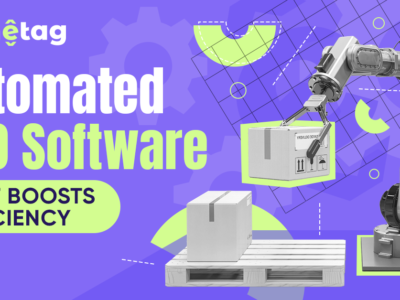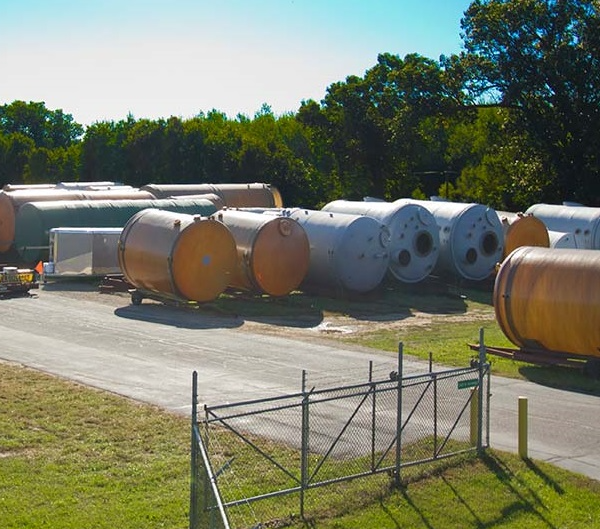
The logistics landscape is undergoing a seismic shift with the advent of smart warehousing. At the heart of this revolution is the Internet of Things (IoT), which is not just transforming operations but redefining the very fabric of inventory management and customer satisfaction. This comprehensive post will delve into the intricacies of IoT in warehouses, offering a deep dive into how real-time visibility is not just a buzzword but a business imperative.
The IoT Revolution in Modern Warehousing
The warehousing sector is experiencing a transformative shift with the integration of the Internet of Things (IoT). This technological revolution is redefining inventory management and operational efficiency. IoT devices, from sensors to RFID tags, are the linchpins of this change, offering a continuous flow of data that empowers warehouses to become more responsive and agile. With IoT, every item and process within the warehouse ecosystem is interconnected, providing a level of visibility and control that was previously unattainable. This new era of smart warehousing is setting the stage for unprecedented optimization and growth in the logistics industry.
Warehousing and IoT: A Match Made in Efficiency Heaven
The synergy between warehousing and IoT is revolutionizing the industry, creating a nexus of efficiency that propels businesses forward. IoT’s network of sensors and smart devices brings a new level of precision to inventory management, optimizing every facet of warehouse operations. This integration streamlines processes, reduces errors, and boosts productivity, ensuring that warehouse systems are not just faster, but smarter. As a result, businesses can respond to market demands with greater agility and accuracy, making the most of every logistical opportunity. The marriage of warehousing and IoT is indeed a union that redefines the boundaries of operational efficiency.
Real-Time Inventory Tracking
Real-time inventory tracking is a cornerstone of modern warehousing, offering unparalleled visibility and control. Utilizing IoT devices and cloud computing, it ensures accurate stock levels are maintained, discrepancies are swiftly identified, and replenishment is timely. This system not only enhances operational efficiency but also supports better decision-making, leading to improved customer satisfaction and a robust bottom line in the competitive landscape of logistics.
Data-Driven Decision Making
Data-driven decision-making in warehousing harnesses analytics to optimize operations. By analyzing trends and patterns from vast datasets, warehouses can anticipate needs, streamline workflows, and reduce waste. This strategic approach enhances accuracy, speeds up processes, and drives smarter, more informed decisions that bolster efficiency and productivity.
Smarter Planning with IoT Analytics
Advanced analytics powered by IoT data can transform logistics planning from a reactive to a proactive process. By understanding patterns and predicting outcomes, warehouses can prepare for peak periods, avoid bottlenecks, and reduce operational costs.
IoT-Enabled Warehousing: The Gateway to Enhanced Productivity
IoT-enabled warehousing represents a transformative approach to logistics and inventory management. By integrating sensors, real-time data analytics, and automated systems, warehouses can significantly boost efficiency. This technology enables precise tracking of goods, optimizes storage layouts, and streamlines the supply chain. As a result, businesses can enjoy reduced operational costs, improved accuracy in inventory control, and faster response times to market demands. Ultimately, IoT in warehouses is a key driver for achieving higher productivity and competitive advantage in today’s fast-paced economy.
Sustainability and Efficiency
Sustainability and efficiency in warehousing are achieved through eco-friendly practices and smart resource management. By implementing green technologies and optimizing operations, warehouses reduce their carbon footprint while enhancing productivity. This synergy not only supports environmental stewardship but also drives long-term cost savings and operational resilience.
IoT for a Personalized Experience
IoT technology tailors warehousing operations to individual needs, enhancing user engagement. By analyzing data from connected devices, warehouses can predict customer behavior, customize orders, and provide real-time updates, fostering a personalized experience that boosts satisfaction and loyalty in the supply chain ecosystem.
The Future-Ready Warehousing Ecosystem
The future-ready warehousing ecosystem is poised to revolutionize supply chain dynamics. It leverages advanced technologies like AI, robotics, and IoT to create a highly responsive and efficient environment. This ecosystem supports predictive analytics for demand forecasting, autonomous vehicles for material handling, and drones for inventory checks, ensuring minimal downtime and errors. Such integration leads to a resilient infrastructure capable of adapting to changing market trends, thereby setting a new standard for operational excellence in warehousing.
Conclusion
Embracing IoT in warehousing is no longer optional; it’s a competitive necessity. Businesses that harness the power of IoT for real-time visibility not only streamline their operations but also position themselves as leaders in the logistics sector. Smart warehouses is the key to unlocking efficiency, customer satisfaction, and sustainable growth in the digital age.
Read also: Top Tips To Optimize Warehouse Operation Using ERP










